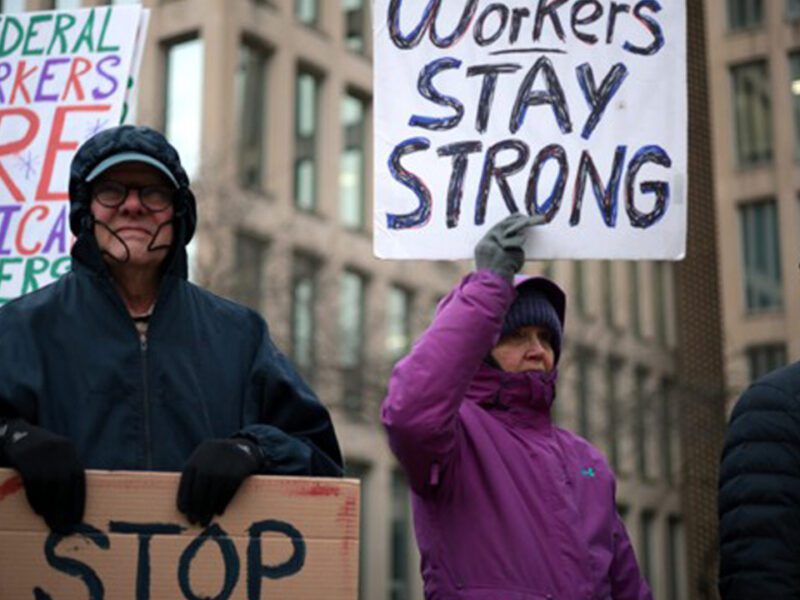Charter Schools Continue to See Enrollment Increases Post-Pandemic
The 74 Million | By Lauren Camera | October 24, 2024
Enrollment declines continue to plague public school districts, but charter schools are bucking the trend, study finds.
Enrollment at charter schools increased by 83,000 students last year, making them the only type of public school to experience consistent growth since the COVID-19 pandemic.
Five-year trend data beginning in the 2020-21 school year shows traditional district public schools lost roughly 1.75 million students, while enrollment in charters grew by nearly 400,000 students.
The figures, included in a new report from the National Alliance for Public Charter Schools, come as America’s K-12 system struggles to forge a comeback in the wake of the pandemic, beset by slow academic recovery, rising rates of absenteeism and perhaps the stickiest wicket of all, enrollment declines.
Complicating the landscape further is a major push by Republicans for the expansion of private school choice programs. In dozens of states across the country, the GOP has made significant inroads toward its goal, fueling concern among public school advocates.
“The data from this report should serve as a wake-up call to all who care about public education,” says Debbie Veney, lead author of the report and senior vice president of communications at the National Alliance for Public Charter Schools. “We have to offer families an option they believe in, or they will leave public schools altogether.”
To be sure, the vast majority of families – 80% according to the National Center for Education Statistics – still enroll their children in the traditional district public schools for which their neighborhoods are zoned. But district public schools lost about 275,000 students last school year. And while that amounts to less than 1% of total enrollment, the sector has experienced a 4% decrease over the last five years. Meanwhile, charters experienced a 12% gain over the same time span.
Among one of the notable statistics in the report: More than 75% of states saw their charter school enrollment increase last year, as roughly the same percentage of states saw their district’s public school enrollment decrease.
“Enrollment growth of more than 80,000 new students in just one year is a clear sign that families are not waiting for the system to catch up to their needs – they are actively seeking schools that meet their children’s needs today,” said Starlee Coleman, President and CEO of the National Alliance for Public Charter Schools.
Indeed, since the pandemic, charters have been enrolling a larger share of students, including at least 10% of public school students in Arizona, California, Colorado, Delaware, Florida, Idaho, Louisiana, Michigan, Nevada, New Mexico, Utah and Washington, D.C. The rate of growth has been faster in places where there is more capacity to expand, especially in smaller states and states with new laws enacting charters and expanding or eliminating existing charter caps, such as Alabama, Iowa, Mississippi, New Hampshire, South Carolina, Washington and Wyoming.
Florida and Texas have posted the largest five-year gains and are responsible for 40% of all new charter students in the report.
Notably, the report compared shifts in school-aged populations with enrollment patterns by state, allowing researchers to identify whether enrollment changes are being driven by population shifts or by a desire for different public school options. The comparison showed that in 36 out of the 43 states included in the report – 84% total – charter schools enrollment growth exceeded school-aged population growth. In contrast, every state’s district school growth underperformed population growth.
“In a world where district schools and charter schools were doing equally well in terms of enrollment, we would see them picking up similar percentages of the school aged population in places seeing growth and similar declines for states where this population is declining,” says Veney. “We see divergent trends, however.”
When it comes to demographics, both charters and district schools are gaining Hispanic students, but charter school growth is outpacing district schools growth by 18 times. In fact, one of every three charter students in the U.S. is Hispanic. Similarly, Black student enrollment is on the rise, increasing roughly 8% at charters and 5% at district schools over the last five years.
The big take-away for traditional school districts, however, is how significantly enrollment is down among white students: Last year, district schools lost nearly 300,000 white students, for a total of 1.4 million lost since the pandemic. Charters, however, have increased enrollment among white students by 21,000 over the same time period.
“The fact that the net outflow is most precipitous among white students from traditional public schools is significant. That really stuck out to me,” says Derrell Bradford, president of 50CAN, an education advocacy organization that supports giving families better options through both public and private school choice.
On the East Coast, charter schools have traditionally sprung up in urban school districts to offer low-income students of color a choice other than their often poor-performing zoned neighborhood schools, Bradford points out. But that’s not necessarily the case in other states, like Arizona and Texas, where some charter schools, like the BASIS chain, are marketing rigorous college preparatory curriculums. The diversification of their offerings, he says, is at least one major driver of their enrollment increases.
To be sure, enrollment gains and drops are not universal – where they happen, the reasons why they happen, and how acutely they happen are all unique to the school district in which they occur. And traditional district enrollment isn’t decreasing solely because of charter school expansions. Many other factors are at play, including a rise in homeschooling and expanded access in Republican-led states to education savings accounts, private school voucher programs, tax credit scholarships and other types of private school choice.
“This is a really interesting time for charters. Charters have been a balance point between two kinds of school choice – private school choice and open enrollment,” says Bradford. “The latter I’d argue is a significantly tougher nut to crack. People are like, ‘I bought my house, I bought my school, it’s mine.’ And that’s kind of a sacred thing.”






